BEHIND THE BADGE
A look into Burlington Police Department’s role in reform and officer training
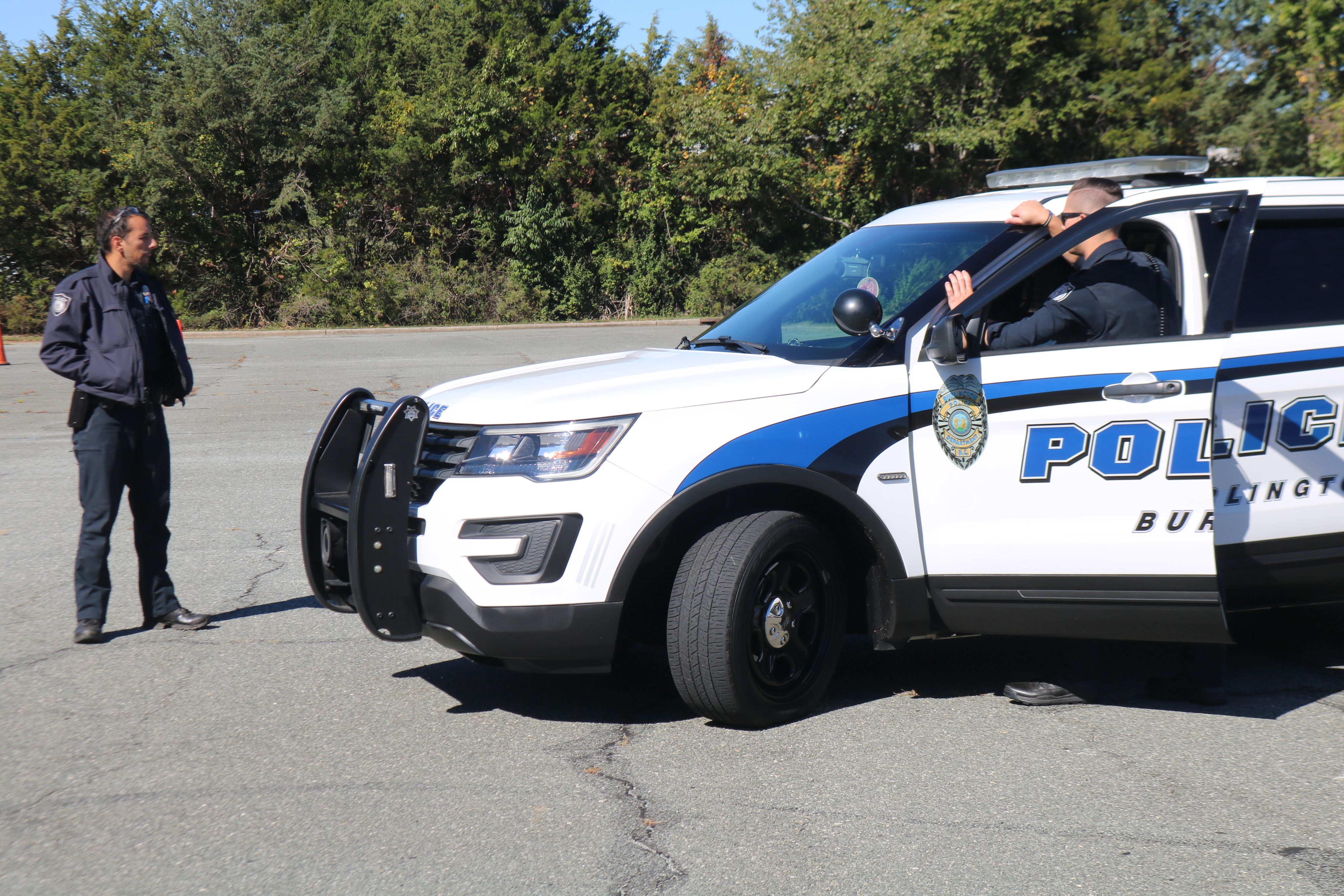
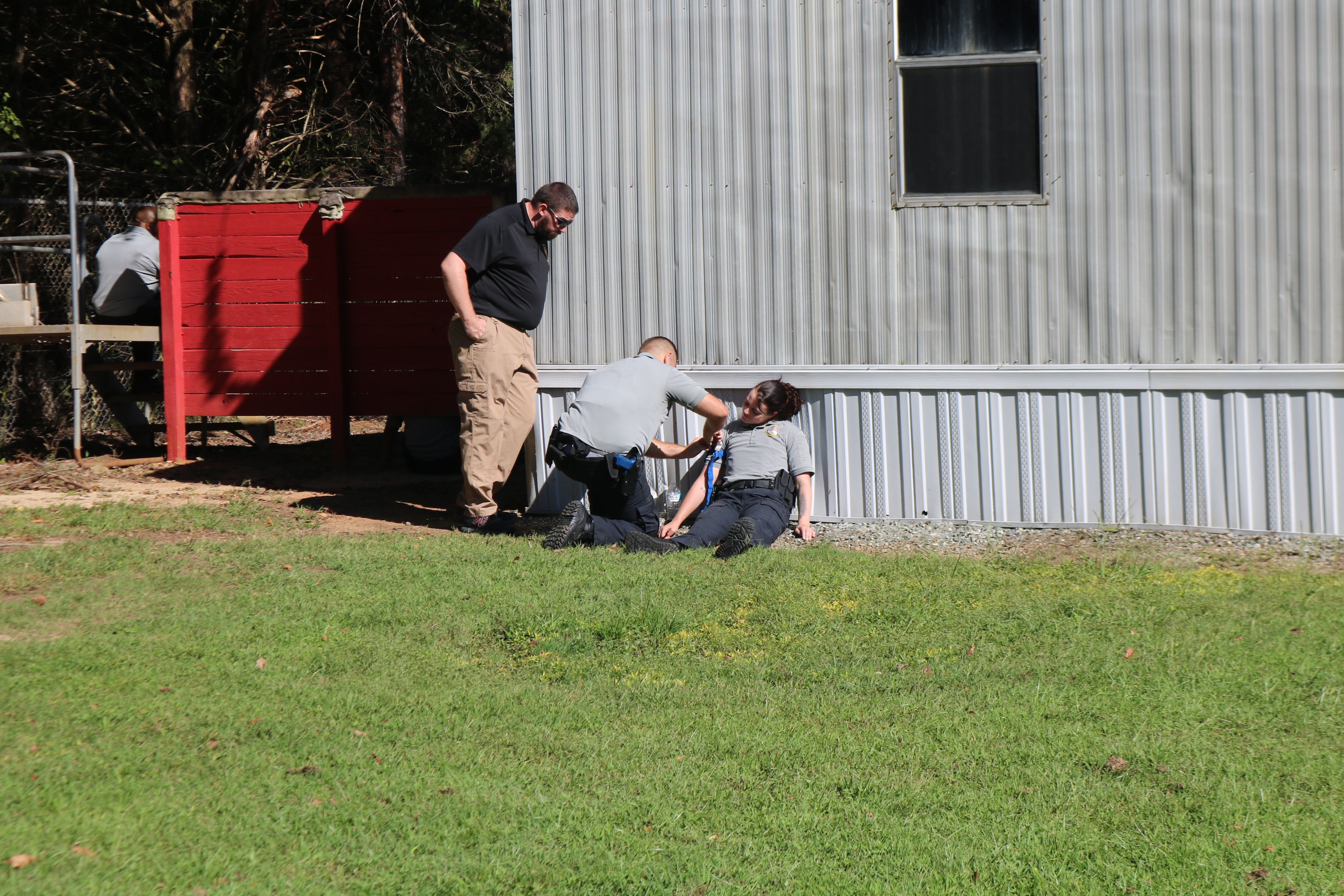



An officer in training practices putting a tourniquet on a fellow officer in training on Sept 23
An officer in training practices putting a tourniquet on a fellow officer in training on Sept 23

Officers train at Burlington Police Department's training facility on Sept. 23
Officers train at Burlington Police Department's training facility on Sept. 23

An officer trains in a high risk traffic stop simulation on Sept. 23.
An officer trains in a high risk traffic stop simulation on Sept. 23.
Lt. Shelly Katkowksi puts on her police uniform, straps a gun to her waist and heads to the Burlington Police Department. When she’s in the city limits, she says, she feels safe - even proud of her role as a police officer. When she goes beyond the city limits, it’s a different experience.
“It's sad that we say we work in local government and we don't say we're police officers, because we don't know what that person's going to say," she said of her and her husband, who is also a police officer. “We don't want that person to hear something. We don't want our little girl to hear that could be a bad thing because she’s proud of her mom and dad for doing that and it’s a hard job.”
Katkowski has been working at the Burlington Police Department for 14 years, after being a coach and athlete. Instead of training athletes, now she trains cops in a time where training is especially important.
The department has its own training facility, located in Haw River, where officers have an opportunity to act as they would while patrolling the community. Every other Friday, half of the patrol team trains for 10 hours.

Lt. Katkowski talks with a fellow officer during training on Sept. 23
Lt. Katkowski talks with a fellow officer during training on Sept. 23
Some of those training scenarios include high-risk traffic stops, crisis intervention, and mental health first aid. When people sign up to become a police officer, Katkowski mentors them in the academy from when they start until they graduate.
However, she said training can only do so much for officers who are mentally exhausted in their career. She said in her experience, the crimes they see on a daily basis, including trauma, loss of life, and domestic violence can greatly affect an officer.
“It's really hard when you go to work and you work really hard and then you go out and somebody shuts the door on your face and calls you something really ugly,” she said. “You just wish that they could see you as the person that you are, but they see the uniform.”
The police department created a Community Police Advisory Team in 2020, a platform to allow community members to have a direct connection to making change. Dejuana Bigelow is in charge of the team and grew up in Burlington. She said when she was younger, her view of law enforcement was negative. She said she was raised to use caution before trusting a police officer.
“There was definitely a disconnection in my neighborhood, in our community when it came to police officers and policing in our neighborhood,” she said. “It was definitely not the way that it is now. It was no one just coming around to see the residents and meet them before, it was no proactive measures. Everything was always bad.”
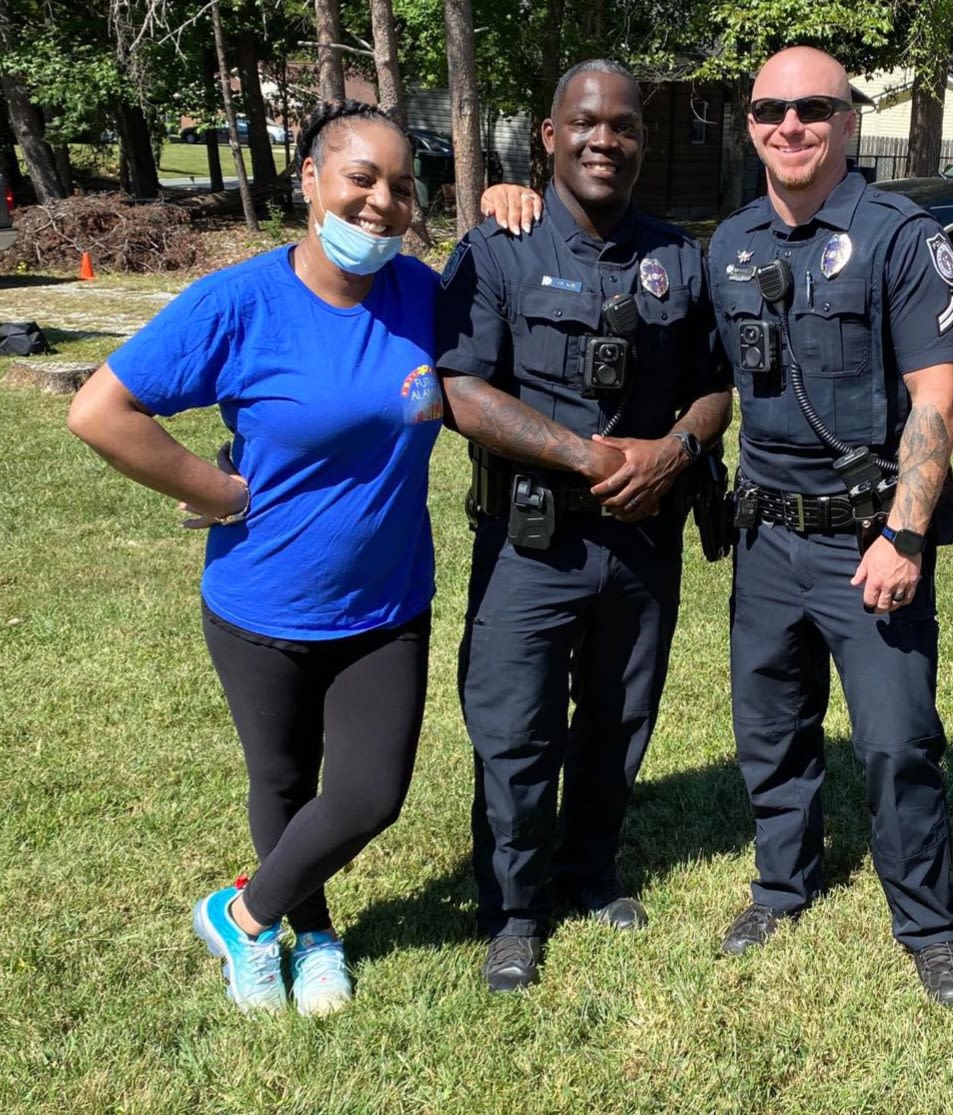
During a Future Alamance Community Outreach event on Sept. 24, Dejuana Bigelow stands next to two officers. Courtesy Dejuana Bigelow
During a Future Alamance Community Outreach event on Sept. 24, Dejuana Bigelow stands next to two officers. Courtesy Dejuana Bigelow
George Hill is also a member and has lived in Burlington for more than 30 years, after serving a short stint as a police officer in Baltimore. He said short staffing of police officers directly affects community relationships. Even though he is working with the police department on reform, he said there is more to be done to improve the relationship.
“Our biggest problem is manpower. Until we can get policemen back in the community to get to know the people and people get to trust them, you got to stay and talk to them,” he said.
Bigelow said the biggest problems facing Burlington are juvenile crime and lack of civic engagement. One challenge her and Hill both agree on is representation in the department.
According to the Burlington Police Department, there are 24 female officers, compared to 101 male officers. There are no Hispanic female officers. Six male officers identify as Hispanic.
Hill said that if the department hires enough officers, it can continue to work on community relationships. He said residents don’t trust the police, but sometimes they don't act to change that.
“Citizens do not trust the police. I think it's a myth with them because they don't get out. They do not attend meetings. When they attend, it's a gripe session. They're always griping about something, it's not like, okay, let's listen,” he said. “They want immediate gratification.”
Bigelow agreed with Hill, but noted that even though there are only 23 Black officers, that is still progress. She said there is still a level of mistrust between her and law enforcement, but she is actively working to build trust and change her community’s perspective. Her solution is funding to decrease juvenile crime and building community engagement with law enforcement.
“I have to be involved in hopes that our children, my children, your children, the people that live here in Burlington, especially those of color, so that they'll one day have a fighting chance,” she said. “They'll one day be able to pick the phone up and feel very comfortable, just as my white friends who feel comfortable calling the police. We deserve that same security.”
For Katkowski, she said she feels that residents need to take into account more than just one experience they had with a police officer. To help combat this issue, Katkowski said she trains her officers on various scenarios, including use of force.
“What we learned was that we need to step up, like duty to intervene. You got to say something, you got to save each other,” Katkowski said. “As hard as it can be telling a sergeant, 'Hey' get up off them' or, 'Hey back off' whatever that is, we've got to train our officers to be able to do that.”
“I have to be involved in hopes that our children, my children, your children, the people that live here in Burlington, especially those of color, so that they'll one day have a fighting chance."
Use of force has been a major area of concern since 2020, when George Floyd, an unarmed Black man was killed by a police officer in Minneapolis, Minnesota. Hill, a Black man, said this affected the black community’s relationship with the police greatly.
“It seemed like they always got off and seemed like to me, once body cameras got involved and citizens got involved taking photos and letting people see what was going on, it brought a change, some change," Hill said. "I'm not saying we are there yet, but it brought some change.”
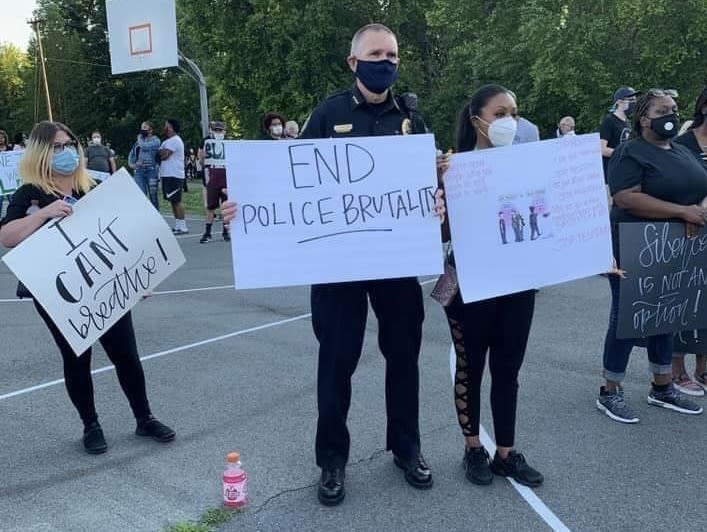
Former Chief of Police Jeffrey Smythe holds an 'End Police Brutality' sign at the first protest in Burlington after George Floyd's death in 2020. Courtesy Dejuana Bigelow
Former Chief of Police Jeffrey Smythe holds an 'End Police Brutality' sign at the first protest in Burlington after George Floyd's death in 2020. Courtesy Dejuana Bigelow
According to the Federal Bureau of Investigation, 60% of police departments reported instances of use of force to the FBI in 2021. Only 36 out of 580 agencies in the state of North Carolina reported such data this year, including Burlington.
Burlington Police Department has addressed its use of force policy. The policy reads:
“Officers shall not apply direct pressure to the throat, windpipe or airway of a person with the intent to reduce or prevent the intake of air (chokehold), unless deadly force is justified.”
If use of force is warranted, the officer has to be able to justify it and report it to the department. In 2021, there were eight instances of excessive use of force.
Katkowski said when evaluating how police departments use force, it goes beyond examining individual police departments. She said it extends to the criminal justice system as a whole, but because police departments are on the front lines, they often are held to a higher standard.
Bigelow said her goal through working on reform is for communities to know that there is a safe place to voice concerns and make changes in Burlington. She said in today's society, the perception is that if you are a person of color, you don't support the police. However, she wants to increase salaries for officers.
“Even though I'm a woman of color, I support the police. We need the police. I can't imagine not being able to call the police. But we do want fair police the same way you want to have a hospital that's willing to serve everybody,” she said. “You want a police department that is willing and open to serve everybody.”
As for Hill, he agreed that there is still work to be done to get community members to trust the police department, including encouraging community members to express problems and solutions to police officers directly, including neighborhood visits.
"Law enforcement to me, they have their hands kind of full because of the manpower. I just believe that once you get the right people in place and have those type of meetings, he said." He said thinks the chief has made strides in that direction, but involving the community in meetings is the next step.
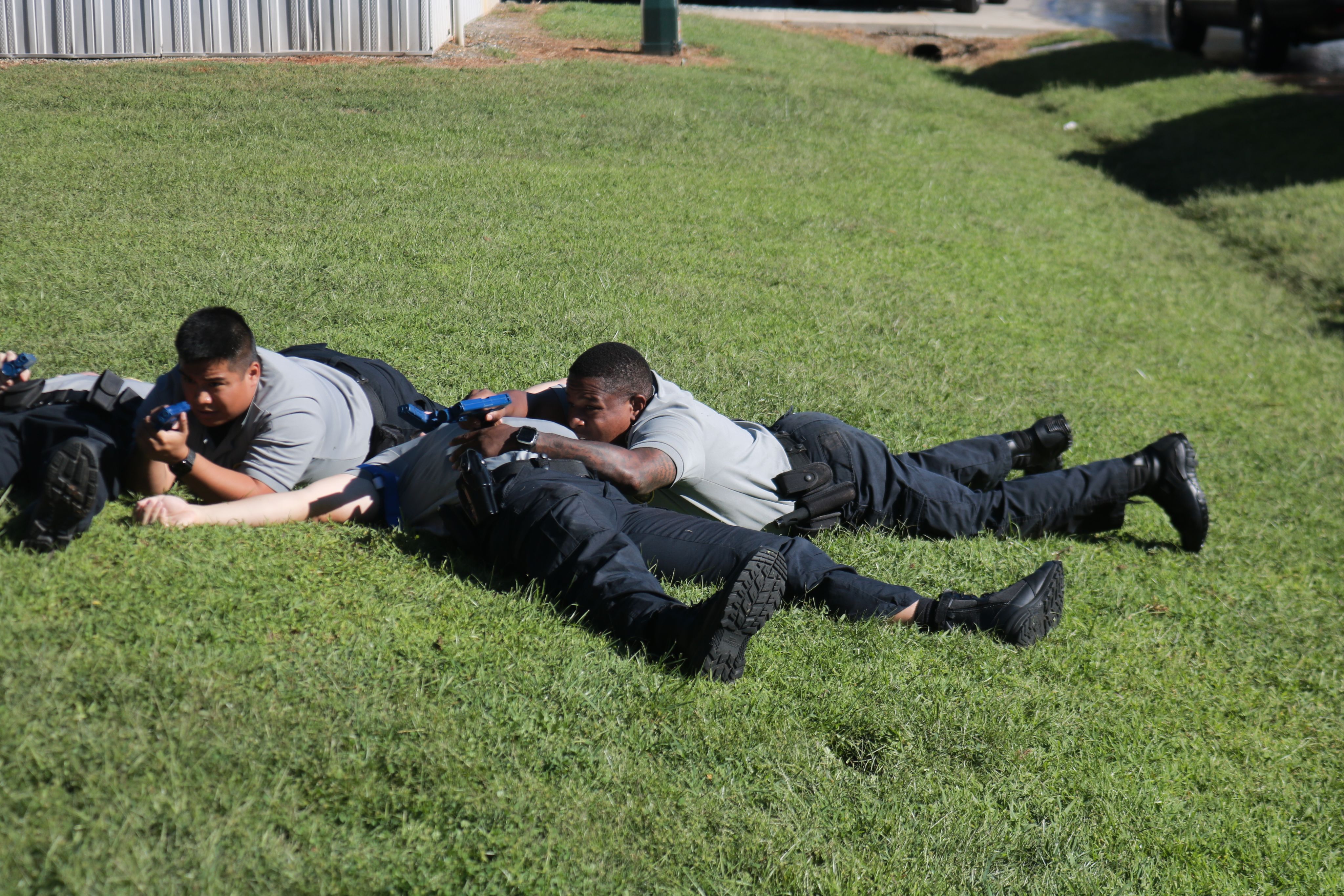
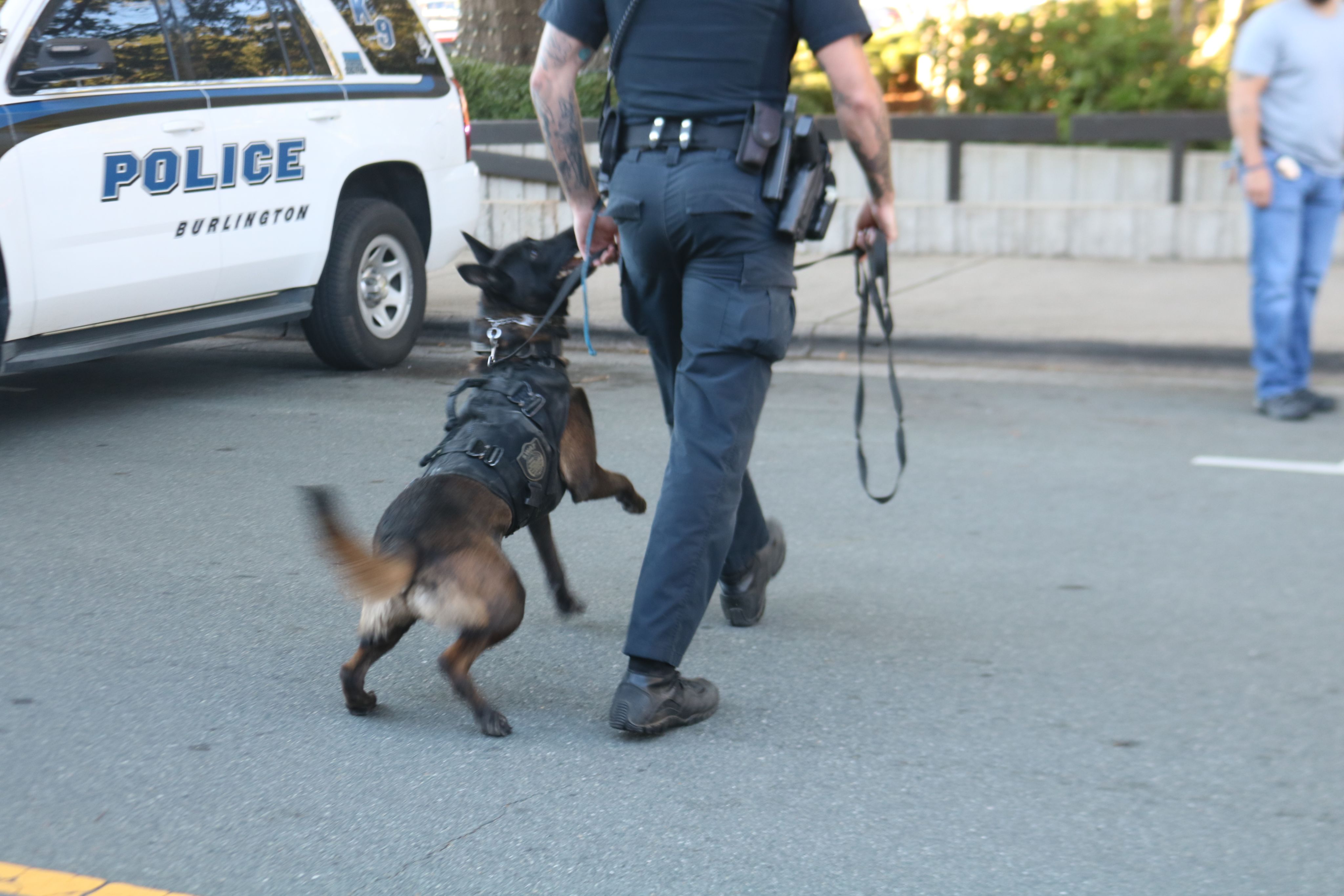

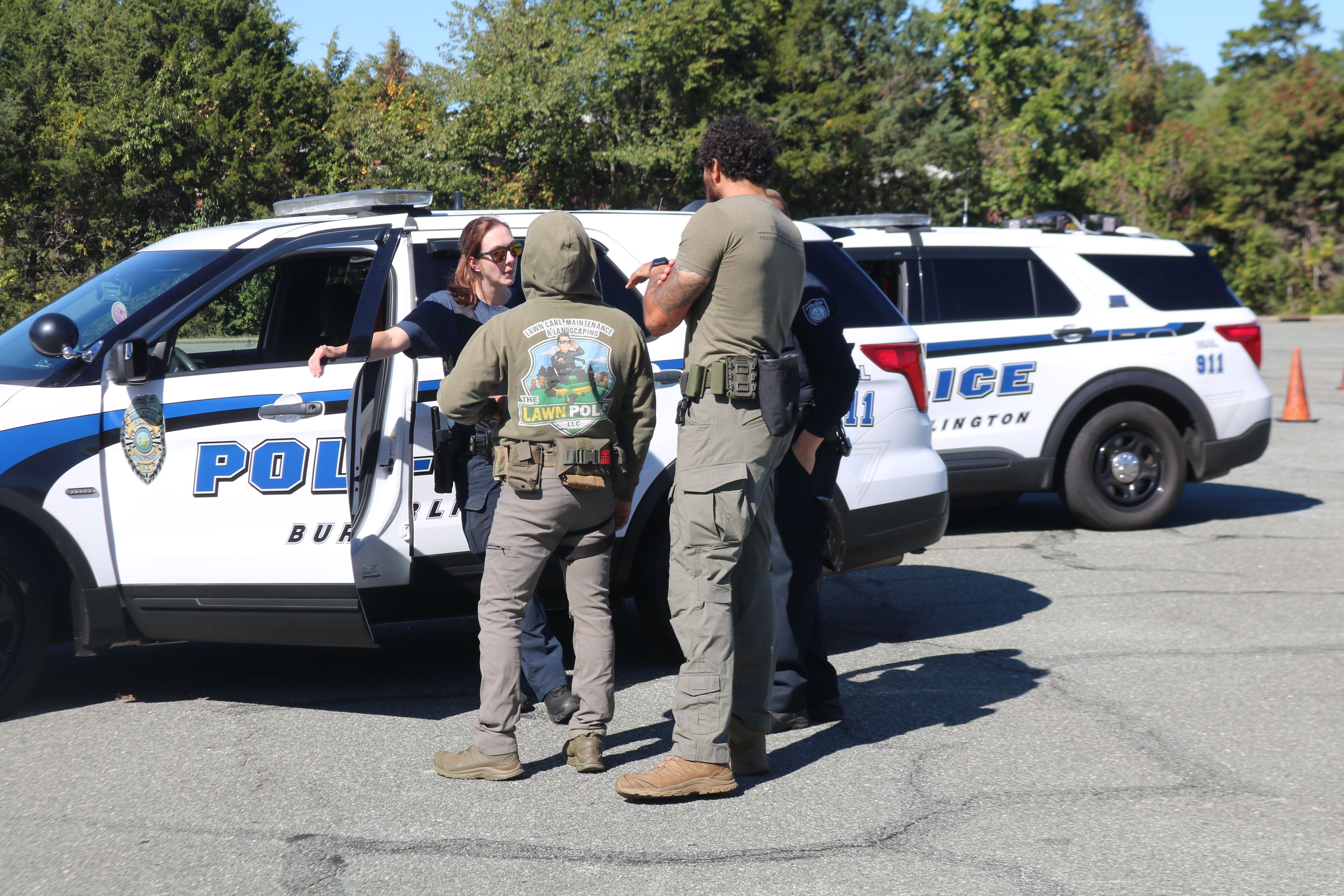
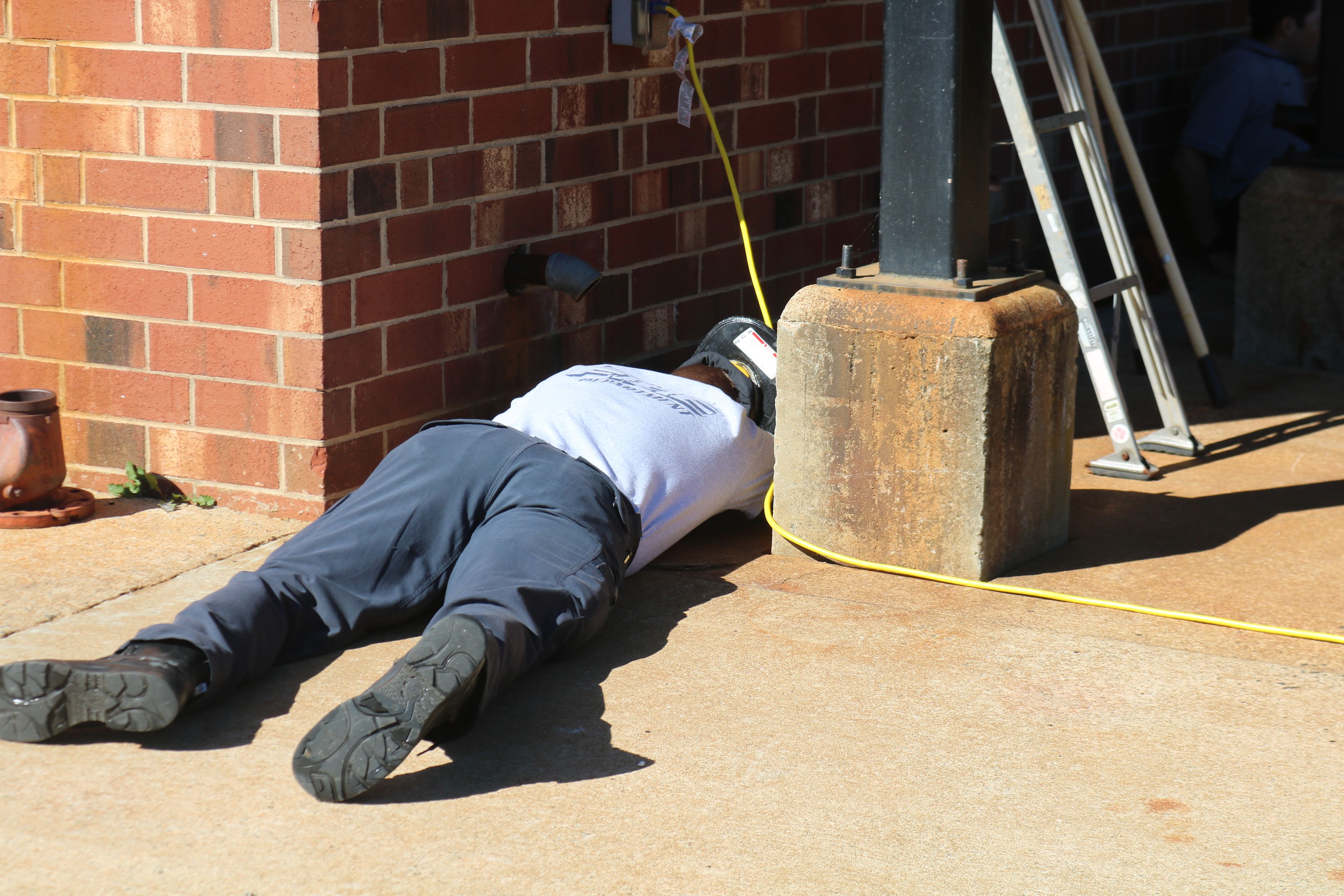
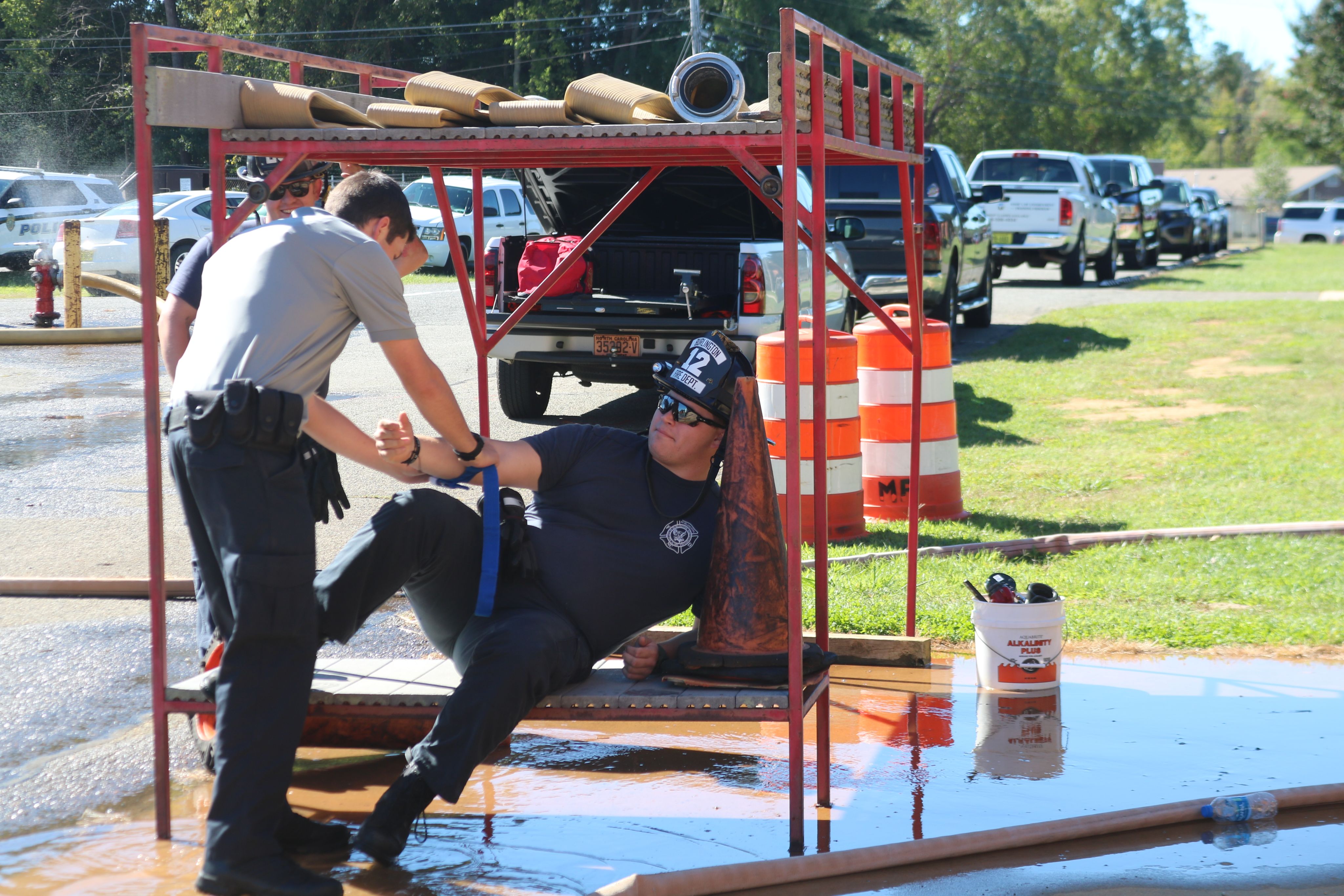

Basic Law Enforcement Training students practice on Sept 23.
Basic Law Enforcement Training students practice on Sept 23.

Officer Alek Ayer prepares to do a K-9 demonstration with his dog Talon at the Phoenix Fourth Friday event in Downtown Burlington Sept. 23
Officer Alek Ayer prepares to do a K-9 demonstration with his dog Talon at the Phoenix Fourth Friday event in Downtown Burlington Sept. 23

An officer lays on the ground as if he was stopped during a traffic stop. During the exercise, the officer acted to have a gun in his waistband.
An officer lays on the ground as if he was stopped during a traffic stop. During the exercise, the officer acted to have a gun in his waistband.

Officers discuss methods for a high risk traffic stop on Sept 23.
Officers discuss methods for a high risk traffic stop on Sept 23.

A fireman lies down on the ground, acting as if he was shot in the leg.
A fireman lies down on the ground, acting as if he was shot in the leg.

A student in Basic Law Enforcement Training practices putting a tourniquet on a fireman, as if he was shot in the arm.
A student in Basic Law Enforcement Training practices putting a tourniquet on a fireman, as if he was shot in the arm.
